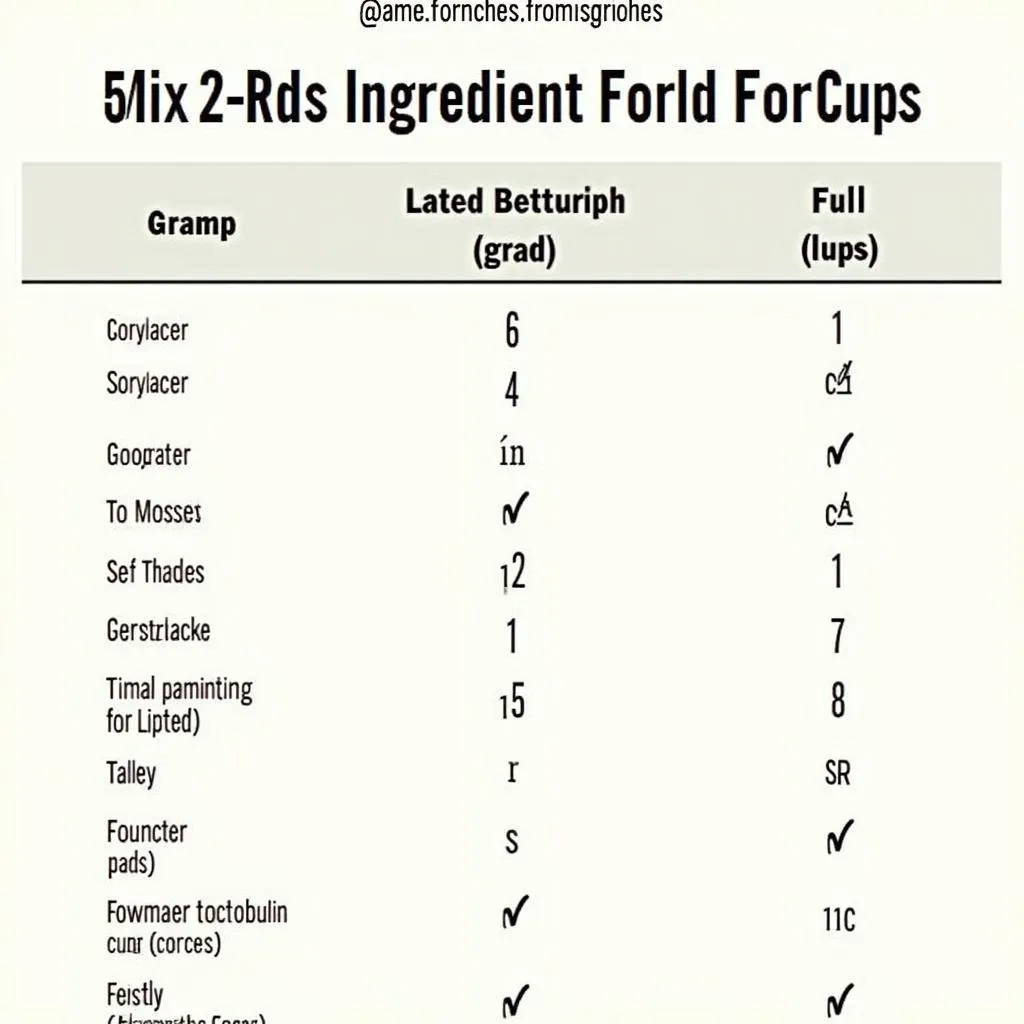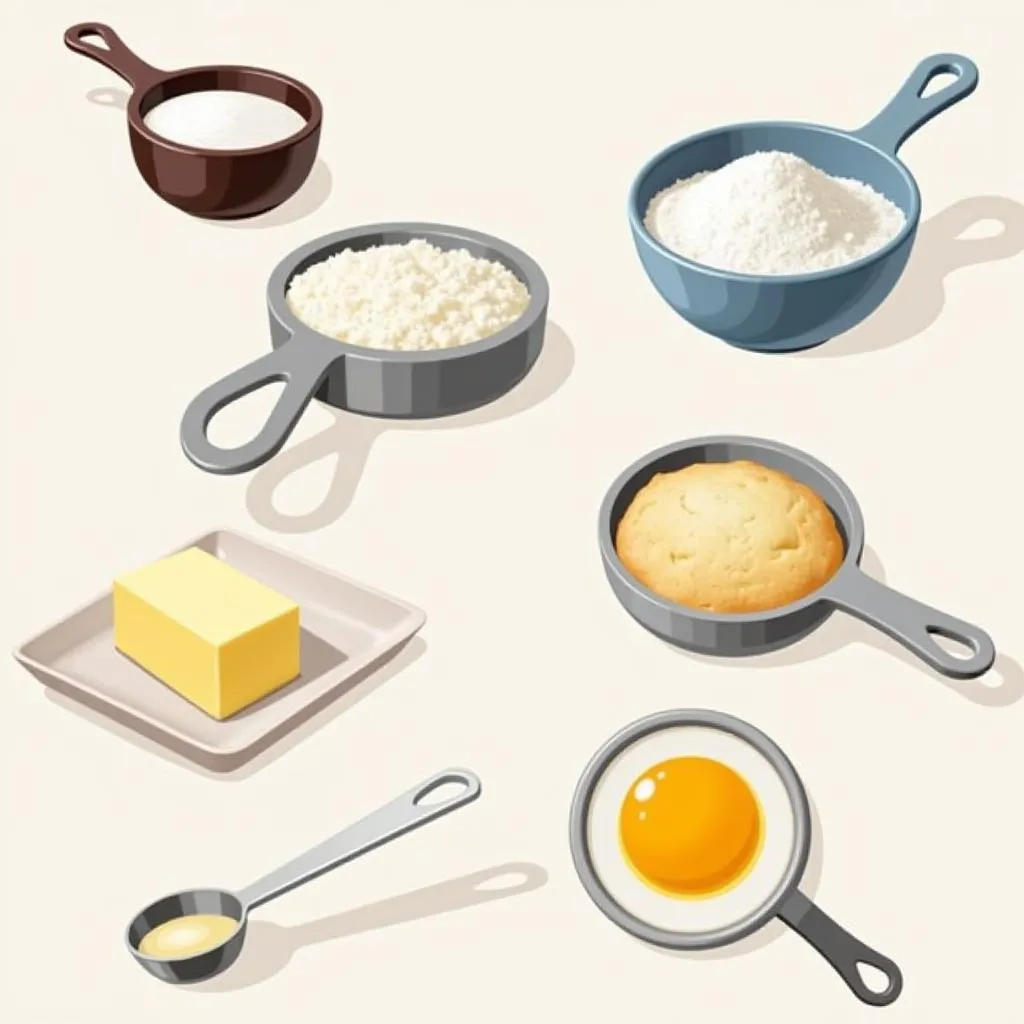Converting Grams To Cups can be confusing, especially when dealing with different ingredients and recipes. This guide will help you understand the conversion process, provide you with useful tips, and offer solutions to common challenges.
Understanding the Conversion Process
The conversion between grams and cups depends on the ingredient’s density. For example, flour and sugar have different densities, meaning a cup of flour will weigh differently than a cup of sugar. To accurately convert between grams and cups, it’s essential to understand the specific density of the ingredient you’re working with.
Factors Affecting the Conversion
Several factors can influence the conversion from grams to cups, including:
- Ingredient type: Different ingredients have different densities, requiring specific conversion factors.
- Ingredient moisture: Dry ingredients like flour or sugar will absorb moisture over time, affecting their weight and volume.
- Measuring method: Different methods of measuring, such as scooping vs. spooning, can lead to variations in volume.
- Temperature: Temperature changes can also impact ingredient density, leading to discrepancies in conversion.
How to Convert Grams to Cups
Here’s a step-by-step guide to convert grams to cups:
- Identify the ingredient: Determine the ingredient you want to convert.
- Find the conversion factor: Research the specific conversion factor for your ingredient. You can find this information online or in a recipe book.
- Multiply the weight by the conversion factor: Use the conversion factor to calculate the volume in cups.
For example, to convert 100 grams of all-purpose flour to cups:
- Conversion factor: 1 cup of all-purpose flour = 125 grams
- Calculation: 100 grams / 125 grams/cup = 0.8 cups
Practical Tips for Conversion
- Use a kitchen scale: A kitchen scale provides the most accurate way to measure ingredients in grams.
- Refer to reliable conversion charts: Consult conversion charts from trusted sources to ensure accurate conversion factors.
- Adjust for density: Remember that densities vary between ingredients, so use the appropriate conversion factor for each.
- Check for specific recipes: Some recipes may provide their own conversion factors, which might be different from general conversion charts.
Common Questions
Why is it important to convert grams to cups?
Converting grams to cups is crucial for maintaining consistent ingredient ratios in recipes. This ensures that your baked goods or dishes turn out as intended.
What are some common conversion factors for different ingredients?
Here are some common conversion factors for different ingredients:
- All-purpose flour: 1 cup = 125 grams
- Granulated sugar: 1 cup = 200 grams
- Brown sugar: 1 cup = 213 grams
- Butter: 1 cup = 227 grams
What are some online resources for grams to cups conversion?
Numerous online resources can help you convert grams to cups. Some popular options include:
- Google Search: Simply type “grams to cups” followed by the ingredient name.
- Recipe websites: Many recipe websites offer conversion tools or charts.
- Conversion apps: Download a conversion app for quick and easy calculations.
Conclusion
Converting grams to cups can seem intimidating, but with the right information and tools, it’s a simple process. By understanding the factors affecting the conversion and using reliable resources, you can ensure accurate measurements for delicious and successful recipes.
Remember, always double-check the conversion factors for your specific ingredients and be aware of variations in density and measuring methods.
 Conversion Table for Common Ingredients
Conversion Table for Common Ingredients
 Kitchen Scale for Accurate Measurements
Kitchen Scale for Accurate Measurements
 Measuring Baking Ingredients
Measuring Baking Ingredients
FAQ
Q: Can I use a standard measuring cup to convert grams to cups?
A: While you can use a standard measuring cup, it’s less accurate than using a kitchen scale and conversion factors.
Q: What about liquids like milk or water?
A: Liquids have a more consistent density, making conversion between grams and milliliters (ml) more straightforward. 1 ml is equivalent to 1 gram.
Q: Are there any online calculators for grams to cups conversion?
A: Yes, many websites offer free online calculators specifically for grams to cups conversion.
Gợi ý các câu hỏi khác, bài viết khác có trong web:
- How to convert grams to ounces
- How to convert milliliters to cups
- How to convert cups to grams
- How to measure ingredients accurately
Kêu gọi hành động:
Khi cần hỗ trợ hãy liên hệ Số Điện Thoại: 0372999996, Email: [email protected] Hoặc đến địa chỉ: 236 Cầu Giấy, Hà Nội. Chúng tôi có đội ngũ chăm sóc khách hàng 24/7.
